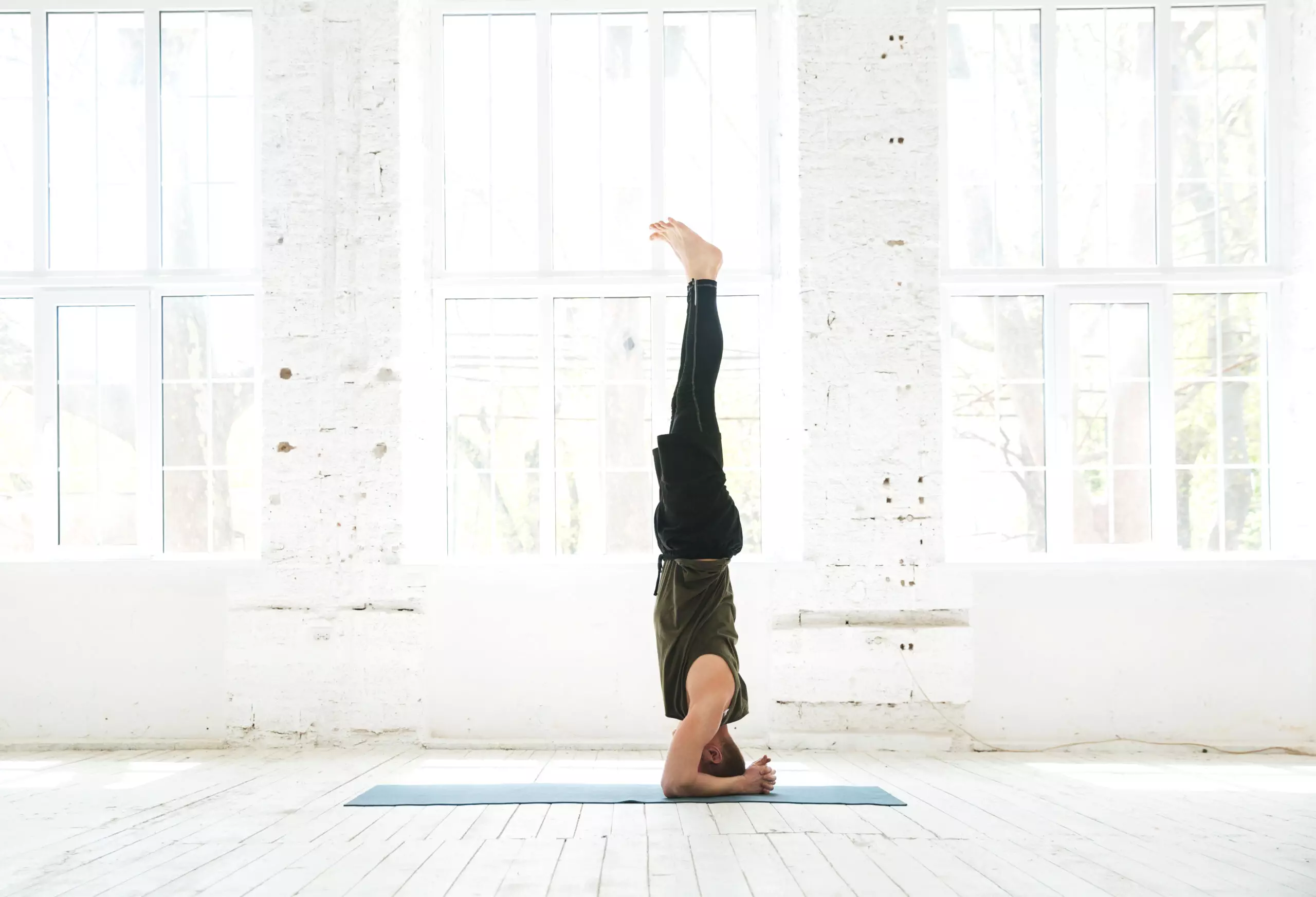Do you think cardio is the answer to losing weight? Learn how much cardio you need to lose belly fat.
A question that often comes up when it comes to cardio is, how much is needed to burn fat effectively? The answer may vary depending on your fitness level, body type, and overall health. Cardio is an essential component when it comes to achieving weight loss. It is a high-intensity workout that involves cardiovascular activities such as running, cycling, or dancing. But, how many minutes of cardio do you need to do to effectively burn fat? Experts recommend at least 150 minutes per week of moderate cardio or 75 minutes of vigorous activity. However, keep in mind that the amount of cardio needed may vary depending on your individual fitness goals. It is always best to seek advice from a professional trainer or health expert to create a personalized plan that suits your unique needs. In this article, we explore the science behind cardio exercise and the right amount of cardio required to burn fat effectively.
Cardio and Belly Fat Loss: The Relationship and Effective Weight Reduction Strategies
Belly fat, also known as visceral fat, is the stubborn covering your abdominal organs. It is linked to numerous health issues such as heart disease, stroke, and insulin resistance. Reducing the size of your belly is essential for better health and quality of life. Cardio is often recommended by health professionals and fitness enthusiasts as an effective way to reduce your belly size. But is it true that cardio is the magic bullet for shredding fat? In this post, we will explore the relationship between cardio and fat loss, and share some effective strategies for different body types.
How much Cardio?
Cardio, also known as aerobics, is any physical activity that increases your heart and breathing rate, and oxygenates your body’s muscles. Typical cardio includes brisk walking, jogging, cycling, swimming, dancing, and jumping jacks. Cardio is beneficial as it burns calories and, improves cardiovascular health, boosts mood, and reduces stress.
How Does Cardio Affect Weight Loss?
While cardio is beneficial for overall weight loss, it may not specifically target a specific area. Research has shown that spot reduction, i.e., fat loss from a specific body part, is not possible by doing targeted exercises. Thus, doing endless crunches or sit-ups may not burn fat directly. However, cardio can indirectly reduce belly size by promoting overall weight loss, including visceral fat. A study published in the Journal of Applied Physiology found that aerobic exercise reduced visceral fat in men and women who exercised five times per week for 16 weeks. Another study published in the Obesity journal found that moderate-intensity aerobics for 12 weeks reduced subcutaneous abdominal fat in overweight and obese adults.
Here’s How Much Cardio is Effective for Weight Reduction?
The American Heart Association recommends 150 minutes of moderate-intensity cardio or 75 minutes of high-intensity cardio per week for overall cardiovascular health. To reduce pounds, however, you may need to do more cardio, depending on your body type and goals. A study published in the Journal of Obesity found that middle-aged women who want to reduce body weight did 300 minutes of moderate-intensity aerobics per week for 24 weeks lost significant amounts of belly size compared to those who did less than that. Another study published in the American Journal of Clinical Nutrition found that doing 60 minutes of cardio , six times a week for a year, reduced visceral fat in overweight and obese adults.
Body balance is often forgotten when people think of losing weight.
This includes more than just our physical balance, but also our overall life balance. It involves taking care of our bodies through proper eating habits and ensuring that we get enough rest. Our lifestyles play a huge role in this, but it can be difficult to determine if we’re living a balanced life. One simple way to evaluate this is by assessing our cardio effectiveness. If our cardio efficiency isn’t where it should be, it could be a sign that we’re lacking in the rest factor or that our eating habits need improvement. This is why the importance of balanced living cannot be overstated. It’s essential to look at our habits and determine if they’re benefiting our bodies or harming them. By making the necessary changes to improve our overall life Balance, we can improve our cardio efficiency and overall health in the process. This is why taking the time to assess our lifestyle choices is important. It’s the first step in creating a healthier and more balanced life.
When we talk about cardio, we often forget that it is not just about the physical aspect, but about a balanced lifestyle as well. To really see the effectiveness of cardio, we have to consider life balance factors such as balanced nutrition, relationships, work, and fitness. These four pillars of balance are essential to live a healthy and fulfilled life. A balanced nutrition is vital to fuel the body with the right nutrients, to help in recovery after a workout, and to maintain a healthy weight. Similarly, balancing your fitness routine with different exercises such as strength training and yoga can help avoid burnout and injury, while keeping the body challenged. The third crucial element is a balanced work life, which includes taking breaks, managing stress, and prioritizing your overall well-being. Lastly, balanced relationships help in mental and emotional health which are just as important as physical health. Building a strong support system can motivate one in their health journey and keep them on track. So when thinking about cardio, ensure to take into account not just the physical workout, but also the balance in all aspects of one’s life to achieve optimal results. Let’s find the perfect balance and strive towards a healthy lifestyle! benefits from making small, consistent changes to your daily life.
Fat loss is much more than eating less calories to reduce belly size. Balanced living will help you lose weight and burn calories faster.
If you’re looking to shed a few pound, cutting calories is definitely a positive step in the right direction. However, it’s important to note that it’s not necessarily the most important step. Sure, reducing your calorie intake will help you create a calorie deficit which is necessary for weight loss. But to make true and lasting progress, you need to focus on achieving a balanced life. This means incorporating regular exercise into your routine and making sure you’re fueling your body with healthy and nutrient-dense foods. By focusing on balanced living, weight loss can become an automatic byproduct of your healthy habits. Balanced fitness is key to achieving both physical and mental health, which is essential for sustainable wellbeing. So, while reducing calories is important, it should not be your only focus. Make sure that you take a holistic approach to your weight loss journey and prioritize creating a healthy and balanced lifestyle. This is what will ultimately help you achieve your goals and maintain them long-term.  People that need to lose weight worry about doing to much cardio when they should be focused on living a balanced lifestyle.
People that need to lose weight worry about doing to much cardio when they should be focused on living a balanced lifestyle.
A Cardio routine is an important element of your work out. Cardio can’t reduce your belly if you don’t focus on creating a balanced life plan.
Are you looking to lose weight and improve your overall health? Cardiovascular exercise is a great way to see results and achieve your fitness goals. Cardio for fat loss exercises are those that increase your heart rate and force your body to help you burn calories. To lose fat through cardio, you need to create a calorie deficit by burning more calories than you consume. It takes a deficit of 3,500 calories to lose one pound, so you need to burn around 500-1000 more calories per day than you consume if you want to lose one pound per week. This is known as calorie burn.
There are various forms of cardio that you can do to burn calories, including jogging, cycling, swimming, dancing, hiking, and practicing high-intensity interval training (HIIT). Each type of cardio burns a different number of calories per hour. For instance, a 160-pound person can burn around 606 calories per hour jogging, 290 calories per hour cycling, 423 calories per hour swimming, and 250 calories per hour dancing.
While cardio is essential for losing weight, it’s important to remember that it’s only one piece of the puzzle. For a well-rounded approach, incorporate these five balanced living tips for effective cardiovascular exercise.
1. Incorporate Strength Training
Strength training builds muscle mass, which helps your body burn more calories even when you’re not working out. It also helps to improve your posture, reduce your risk of injury, and increase overall fitness. You can incorporate strength training into your cardio routine by doing it before or after your cardio workout or by alternating strength training days with cardio days.
2. Follow a Healthy Diet
No matter how much cardio you do, you won’t see significant results without a healthy diet. Eating a balanced diet with plenty of fruits, vegetables, lean protein, and healthy fats can help you fuel your body for exercise and support weight loss. Additionally, drinking enough water is essential for staying hydrated and supporting healthy digestion.
3. Get Enough Sleep
Your body needs rest to recover and build muscle after a workout. Not getting enough sleep can sabotage your fitness goals. Aim to get at least 7-8 hours of sleep per night to allow your body to recover and wake up feeling refreshed and energized.
4. Cross-Train with HIIT A Type Of Cardio
High-intensity interval training (HIIT) is an effective way to burn calories, improve cardiovascular health, and increase endurance. HIIT involves short, intense periods of exercise followed by brief rest periods. It can be incorporated into any cardio workout, such as running or cycling, or practiced as a standalone workout.
5. Mix Up Your Routine Add Weight Training
Doing the same workout every day can lead to a plateau. Mixing up your cardio routine with different exercises, intensities, and durations can help you avoid boredom and continue to see progress. Additionally, trying new exercises can challenge your body and help you target different muscle groups.
In conclusion, cardio to lose pounds is a powerful tool for weight loss and overall health.
Incorporating these five balanced living tips can help enhance the effectiveness of your cardio program and support long-term success. Remember to mix up your routine, follow a healthy diet, cross-train with HIIT, incorporate strength training, and get enough sleep. By doing so, you’ll be well on your way to achieving your fitness goals and living a healthy, balanced life.











